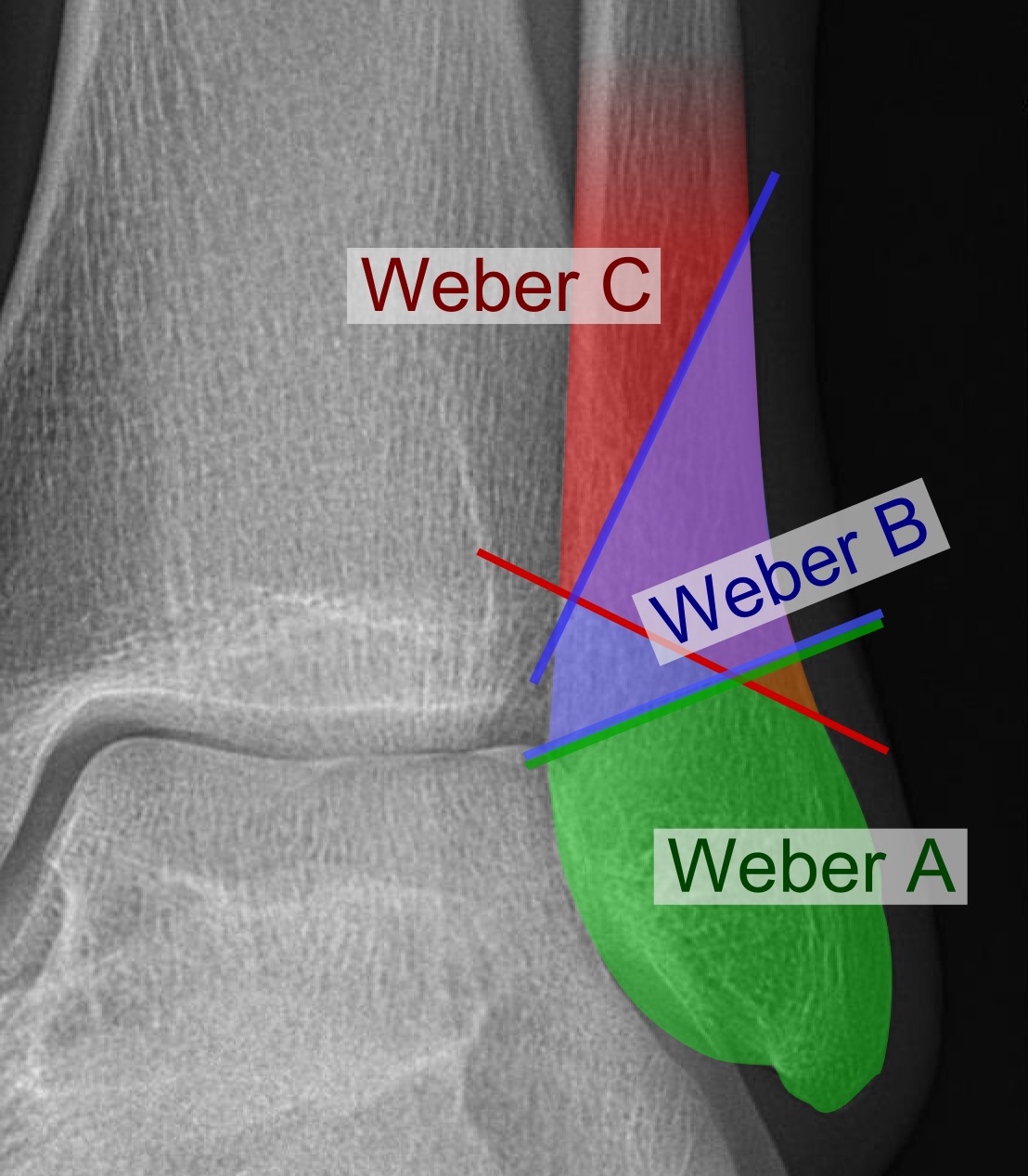Danis–Weber Classification on:
[Wikipedia]
[Google]
[Amazon]

 The Danis–Weber classification (often known just as the Weber classification) is a method of describing
The Danis–Weber classification (often known just as the Weber classification) is a method of describing
 The Danis–Weber classification (often known just as the Weber classification) is a method of describing
The Danis–Weber classification (often known just as the Weber classification) is a method of describing ankle fracture
An ankle fracture is a break of one or more of the bones that make up the ankle joint. Symptoms may include pain, swelling, bruising, and an inability to walk on the injured leg. Complications may include an associated high ankle sprain, compartme ...
s. It has three categories:
;Type A
Fracture of the fibula distal
Standard anatomical terms of location are used to unambiguously describe the anatomy of animals, including humans. The terms, typically derived from Latin or Greek roots, describe something in its standard anatomical position. This position pro ...
to the syndesmosis (the connection between the distal ends of the tibia
The tibia (; ), also known as the shinbone or shankbone, is the larger, stronger, and anterior (frontal) of the two bones in the leg below the knee in vertebrates (the other being the fibula, behind and to the outside of the tibia); it connects ...
and fibula
The fibula or calf bone is a leg bone on the lateral side of the tibia, to which it is connected above and below. It is the smaller of the two bones and, in proportion to its length, the most slender of all the long bones. Its upper extremity is ...
). Typical features:
* below level of the ankle joint
* tibiofibular syndesmosis intact
* deltoid ligament intact
* medial malleolus occasionally fractured
* usually stable: occasionally nonetheless requires an open reduction and internal fixation (ORIF) particularly if medial malleolus fractured
;Type B
Fracture of the fibula at the level of the syndesmosis. Typical features:
* at the level of the ankle joint, extending superiorly and laterally up the fibula
* tibiofibular syndesmosis intact or only partially torn, but no widening of the distal tibiofibular articulation
* medial malleolus may be fractured or deltoid ligament may be torn
* variable stability
;Type C
Fracture of the fibula proximal
Standard anatomical terms of location are used to unambiguously describe the anatomy of animals, including humans. The terms, typically derived from Latin or Greek roots, describe something in its standard anatomical position. This position pro ...
to the syndesmosis. Typical features:
* above the level of the ankle joint
* tibiofibular syndesmosis disrupted with widening of the distal tibiofibular articulation
* medial malleolus fracture or deltoid ligament injury present
* unstable: requires ORIF
Internal fixation is an operation in orthopedics that involves the surgical implementation of implants for the purpose of repairing a bone, a concept that dates to the mid-nineteenth century and was made applicable for routine treatment in the m ...
Categories B and C imply a degree of damage to the syndesmosis itself (which cannot be directly visualised on X-ray). They are inherently unstable and are more likely to require operative repair to achieve a good outcome. Type A fractures are usually stable and can be managed with simple measures, such as a plaster of paris cast.See also
* Lauge-Hansen classificationReferences
{{DEFAULTSORT:Danis-Weber classification Bone fractures Ankle fracture classifications Injuries of ankle and foot